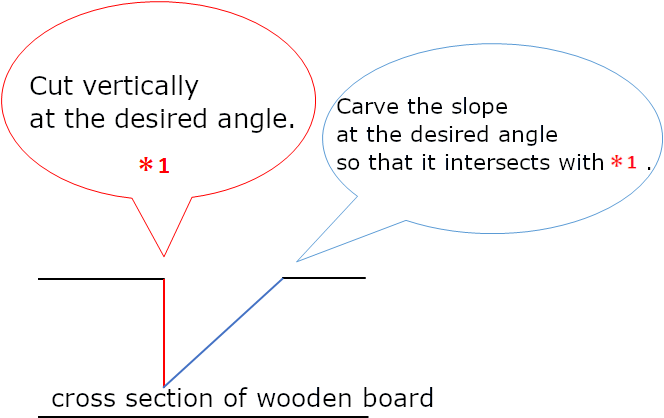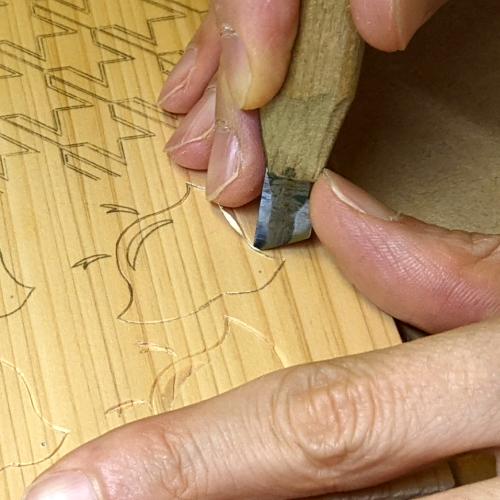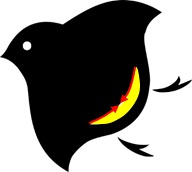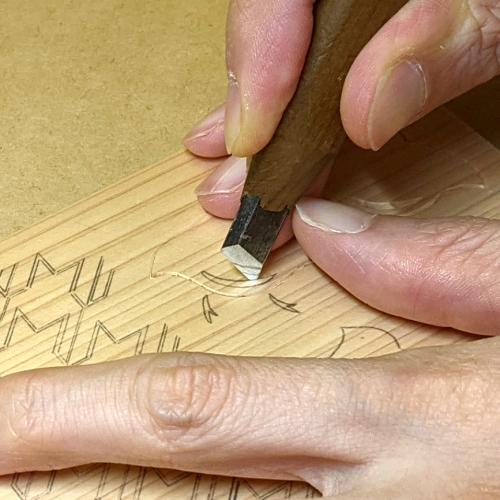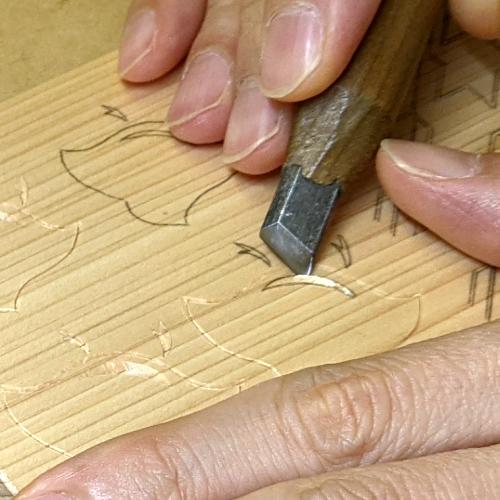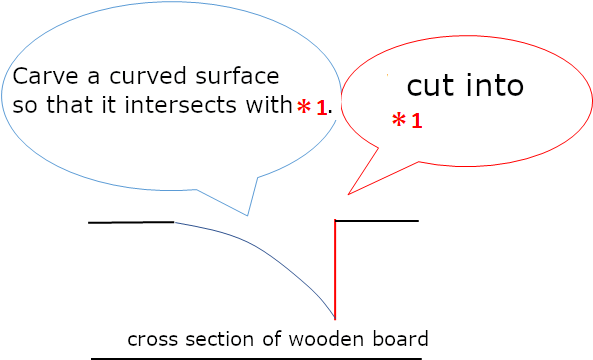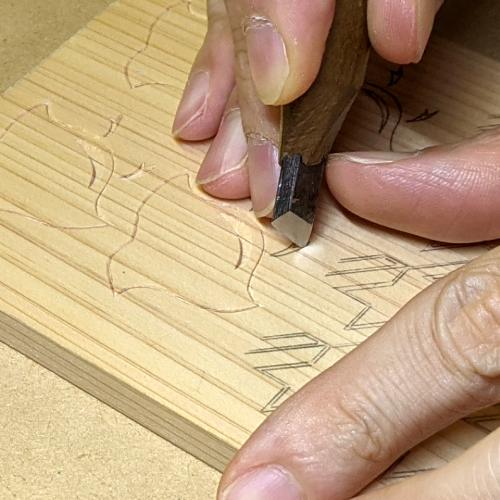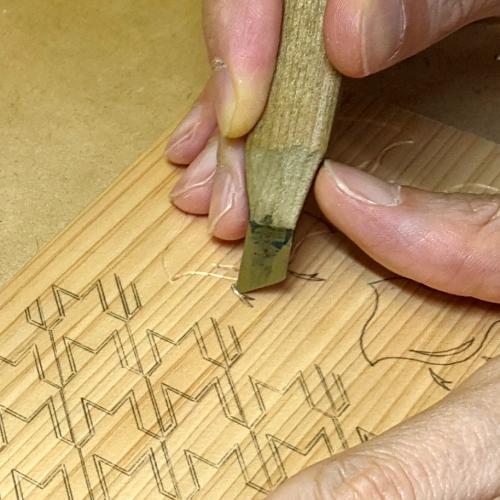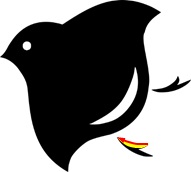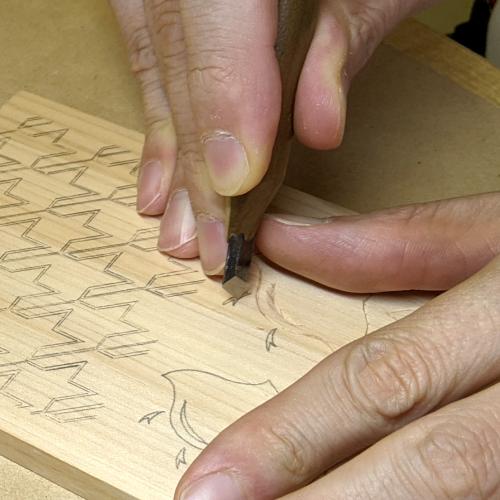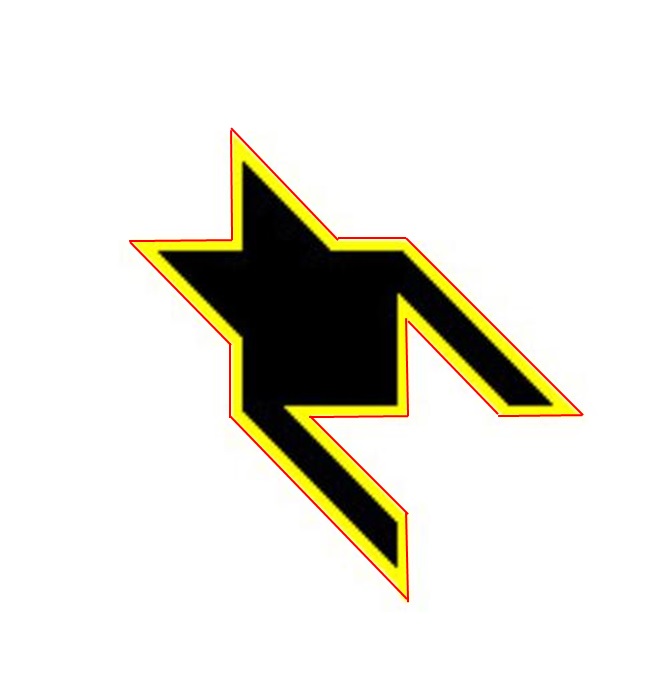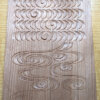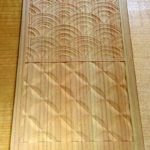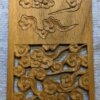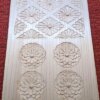How to carve patterns Part 11 ~Chidori and Chidori-Goshi~
This time, we'll be carving with a sharp chisel and a drill.

The patterns we’ll be working on are:
-
Chidori (千鳥) – A design featuring small waterbirds that often fly in flocks.
-
Chidori-Goshi (千鳥格子) – A variation in which these birds are arranged in a grid-like pattern.
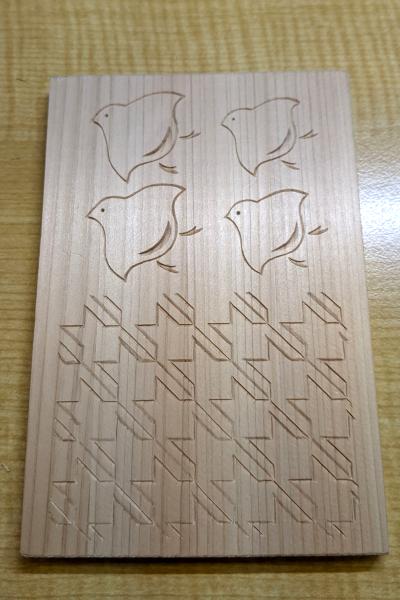
Preparation
Use carbon paper to trace Chidori and Chidori-Goshi onto a postcard-sized wooden board. The sketch can be downloaded from here (PDF of Chidori and Chidori-Goshi) , so please use it.
Use carbon paper to transfer the Chidori and Chidori-Goshi patterns onto a postcard-sized wooden board.
You can download the sketch [PDF of Chidori and Chidori-Goshi] — please use it as a reference.
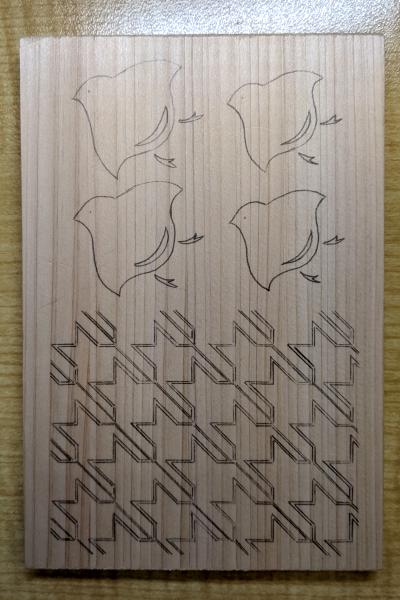
1. How to carve Chidori
Step 1: Start with the Wing
Begin by making a cut along the red line at your desired angle using the sharp chisel.
Then, from a different angle, carve a slope that intersects with that initial cut.
-
Cut
-
Intersecting slope from the opposite side
Carve the red and yellow areas of the belly in the same way as Pattern 1 of Kemanmon —
This means gradually deepening the cut and creating a smooth, outward-curving surface inside the crescent shape.
-
Cut
-
Carve the curve (outward)
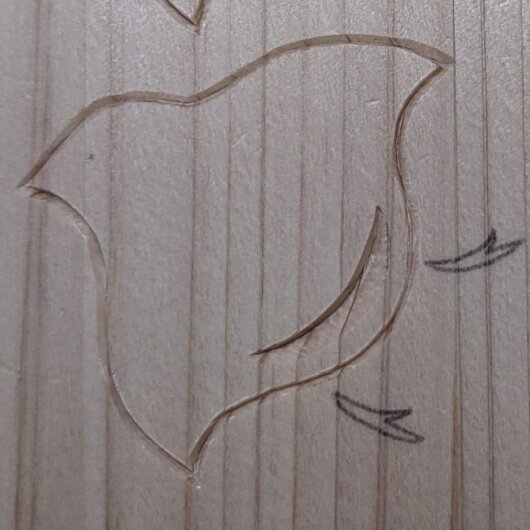

Step 3: Carve the Legs
Lower side of the leg:
-
Follow the red arrow and make a cut that becomes gradually deeper.
-
Then, carve an outward-curving slope, just like Kemanmon Pattern 1.
⚠️ The wood near the legs is prone to splitting — carve slowly and gradually.
Upper side of the leg:
-
Again, make a cut that becomes deeper along the red arrow.
-
Then, carve a concave (inward) surface, similar to Kemanmon Pattern 2.
Repeat the same steps for the other leg.
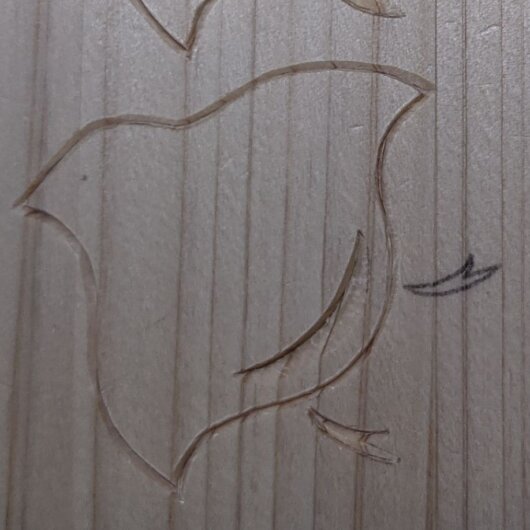

Upper side of the leg:
-
Again, make a cut that becomes deeper along the red arrow.
-
Then, carve a concave (inward) surface, similar to Kemanmon Pattern 2.
Repeat the same steps for the other leg.
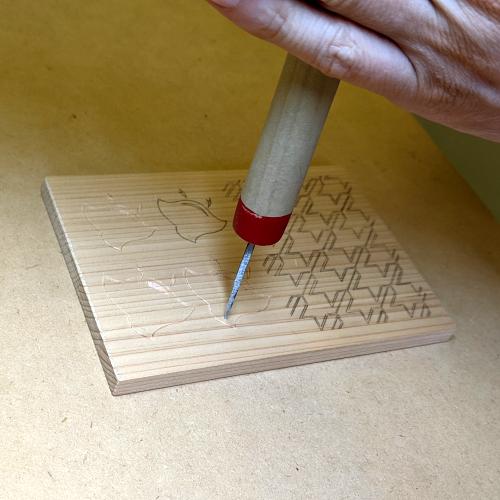

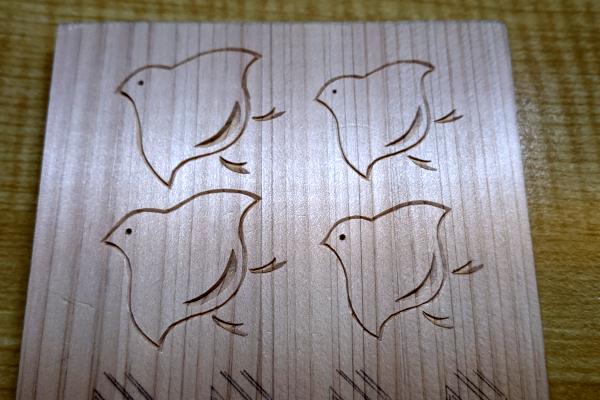

2. How to carve Chidori-Goshi
Begin by making a cut with the sharp chisel along the red lines in the sketch.
Next, carve the yellow-shaded areas into smooth slopes that intersect those cuts.
In places where chip removal is difficult, use the sharp chisel to make additional cuts along the red arrows.
Make sure these follow the direction of the arrows and are gradually deepened.
Then, carve the sloped yellow areas accordingly.
-
Cut along red lines
-
Add supporting cuts as needed
-
Carve intersecting slopes
⚠️ Where the wood is fragile or prone to cracking, don’t try to carve everything in one go.
Instead, make several light passes until you reach the desired shape.


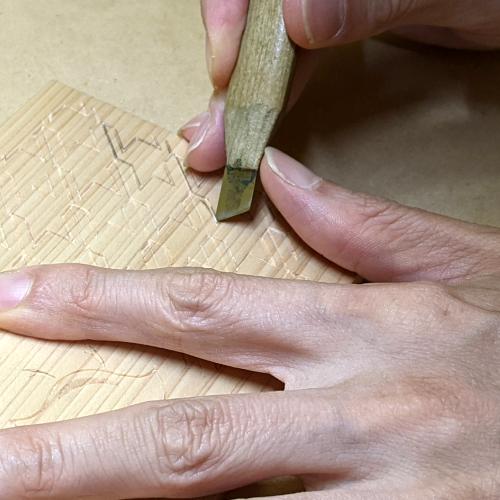

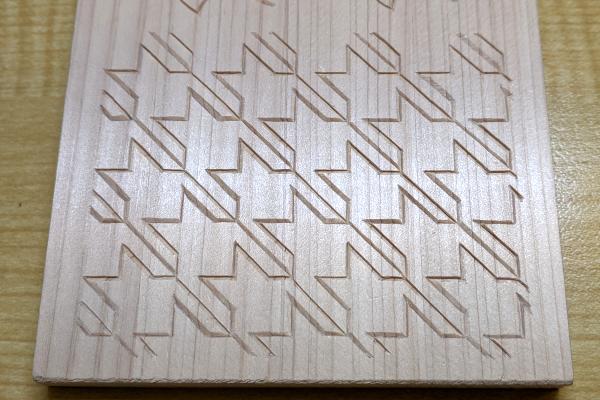

How to carve patterns
- From the lattice to the scales
- Raimon
- Asanoha and Sayagata
- Seigaiha and Sippo-Tsunagi
- Higaki and Kumikikko
- Mimasu-Tsunagi and Mimasu-Chirashi
- Ryusui
- Bundo-Tsunagi and Tatewaku
- Yamajimon and Misujidate
- Kemanmon and Gobosei
- Chidori and Chidori-Goshi ←Current page displayed
- Nejiume (Twisted plum)
- Kikubishi and Yaegiku
- Ichimatsu and Sankuzushi
- Kikko and Yagasuri
- Clouds
- Waves




